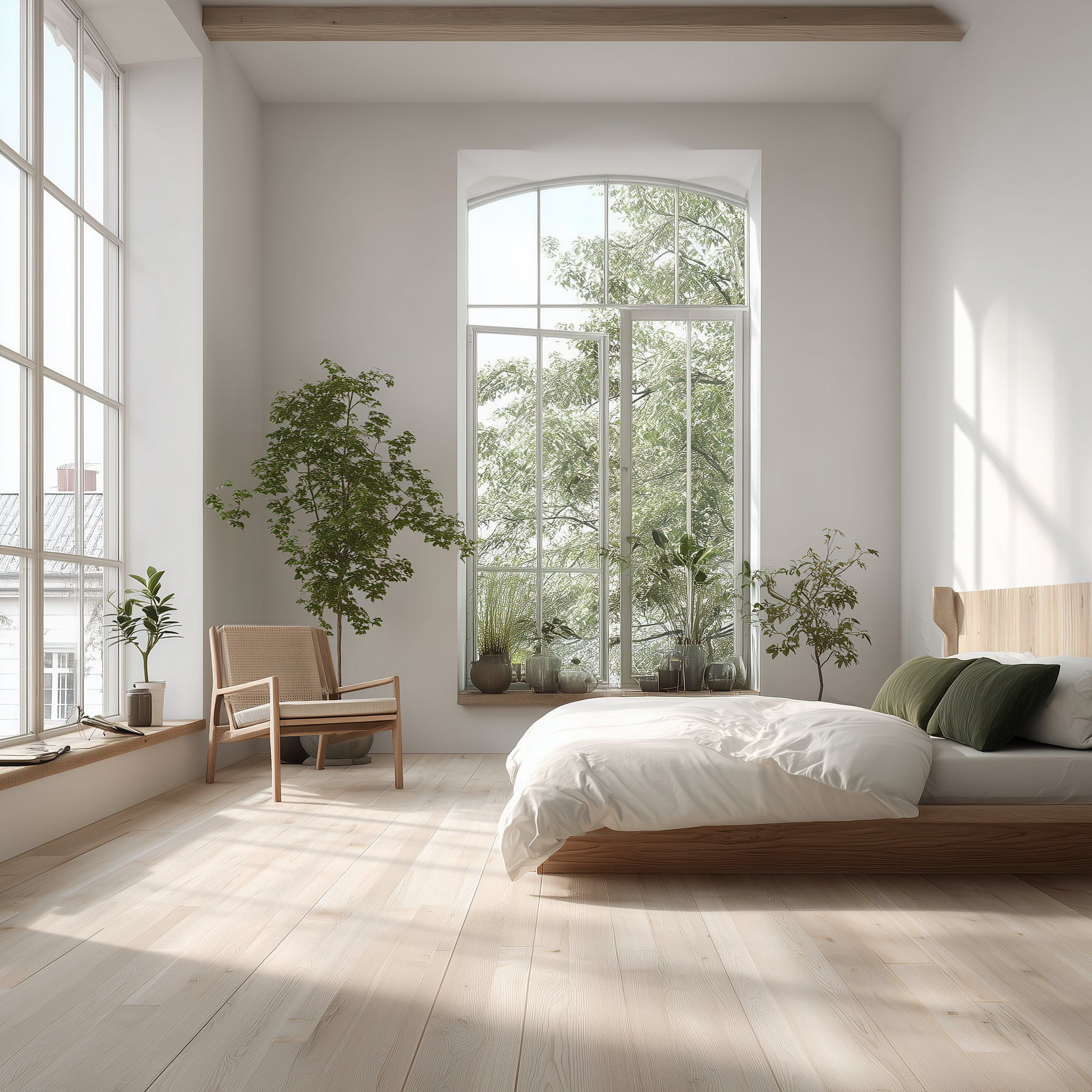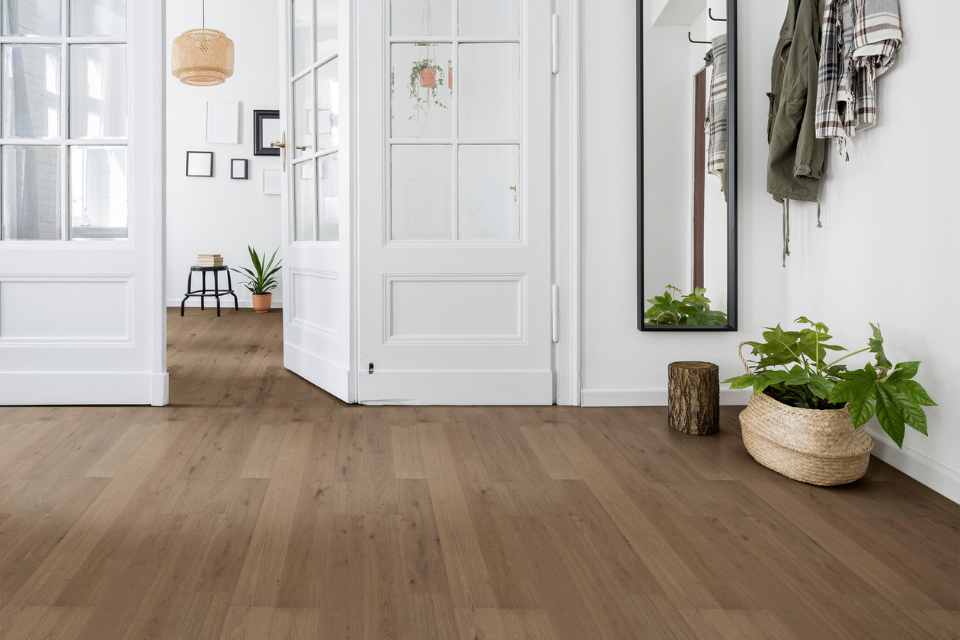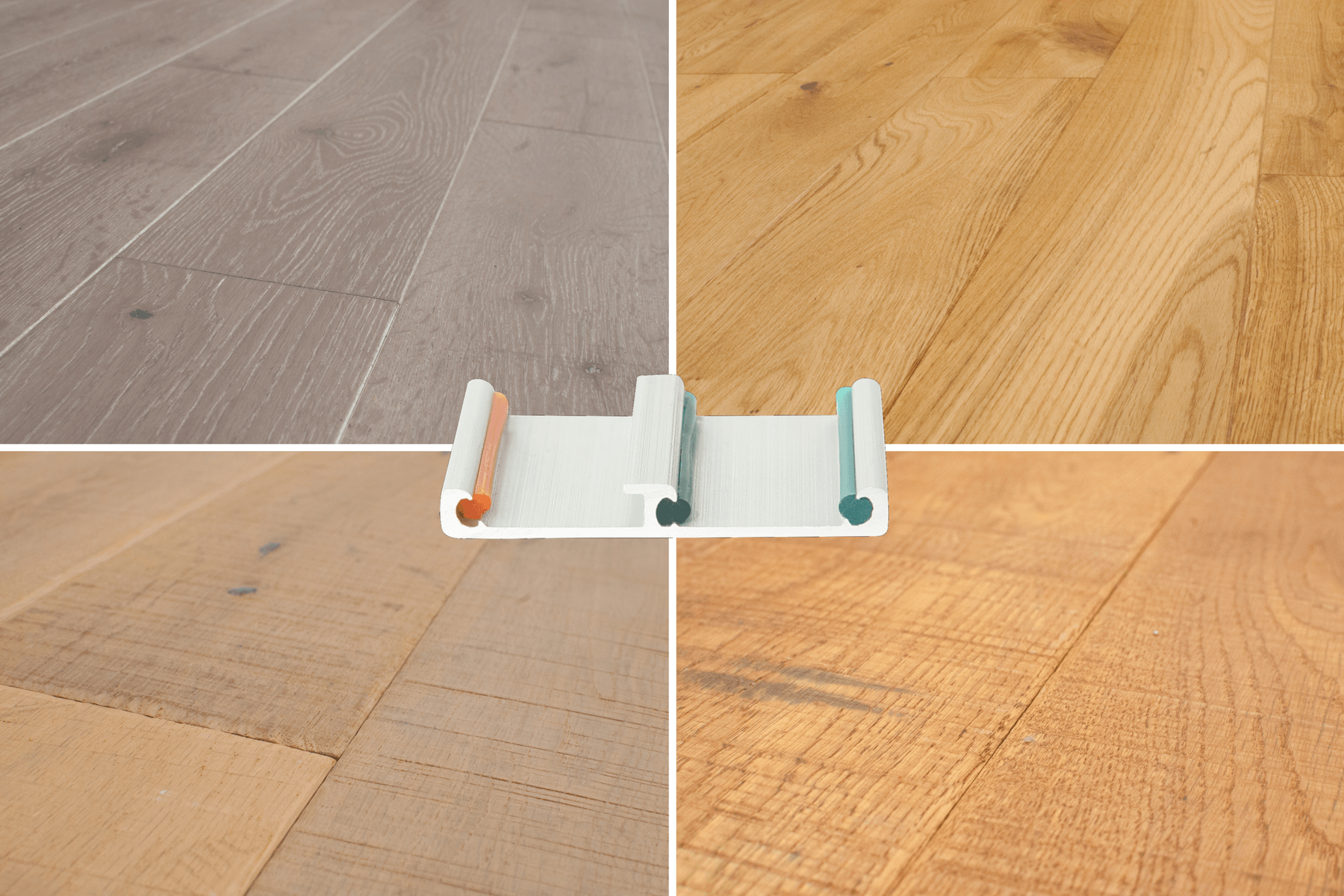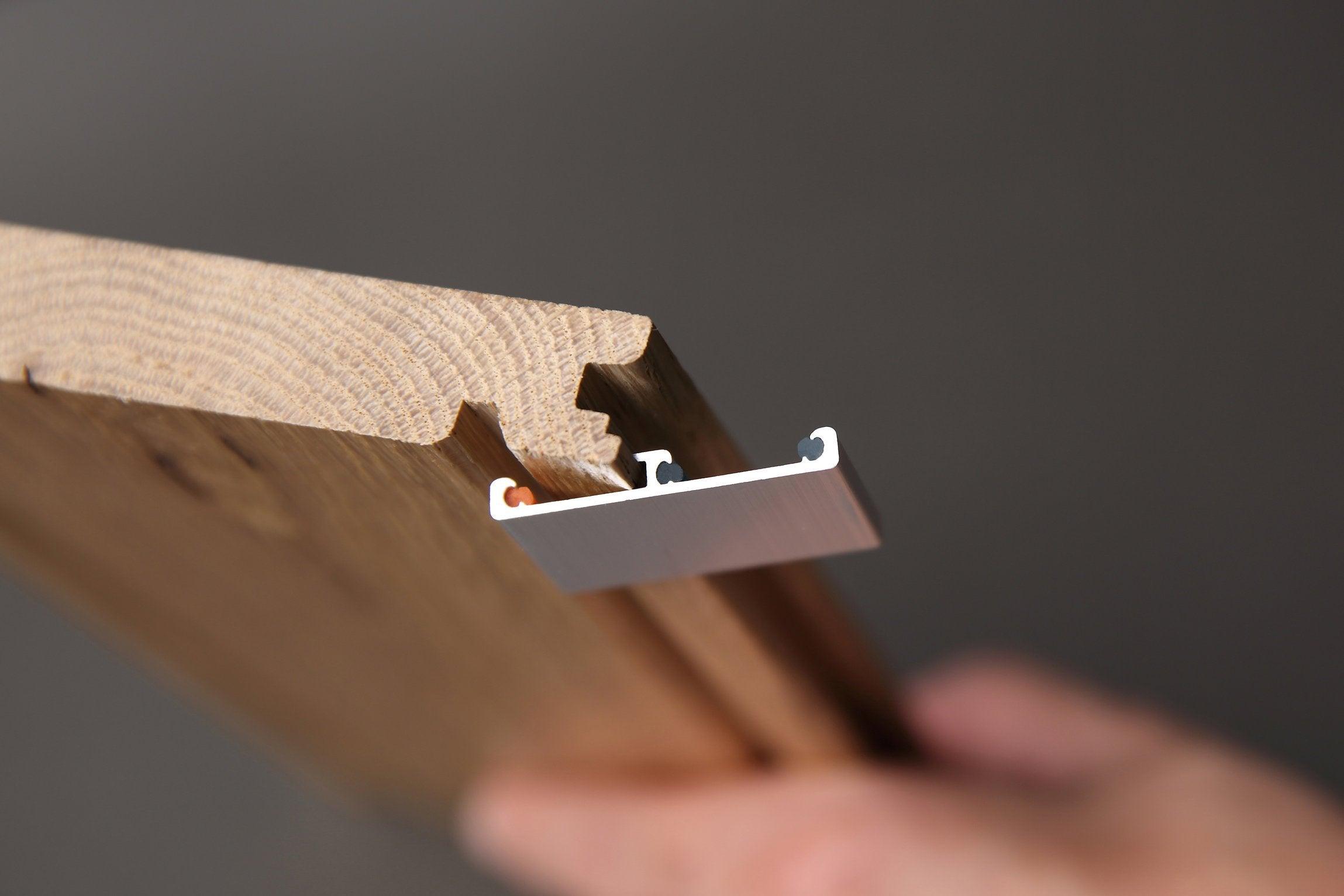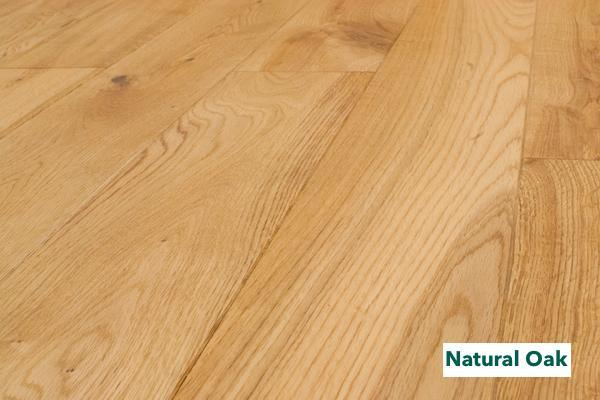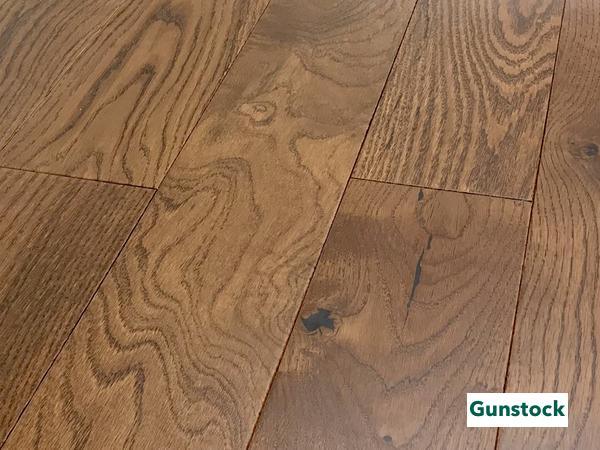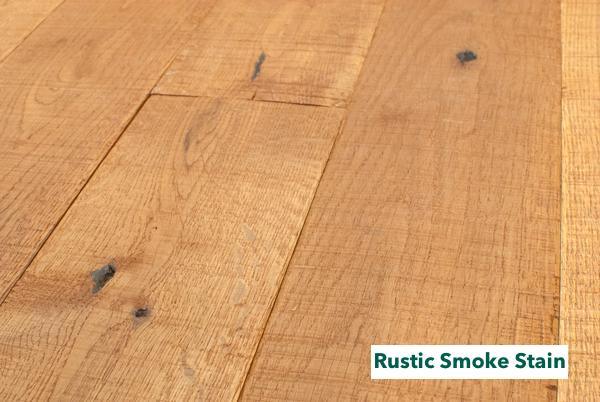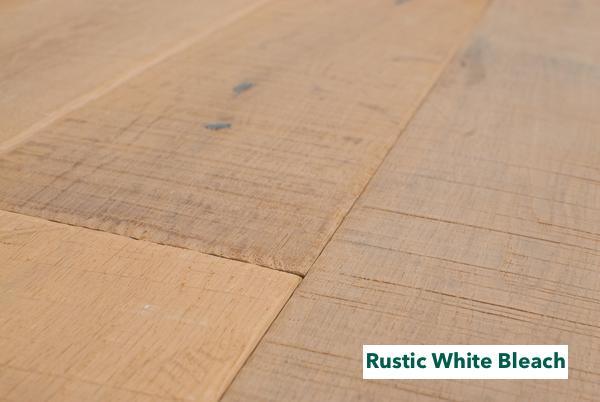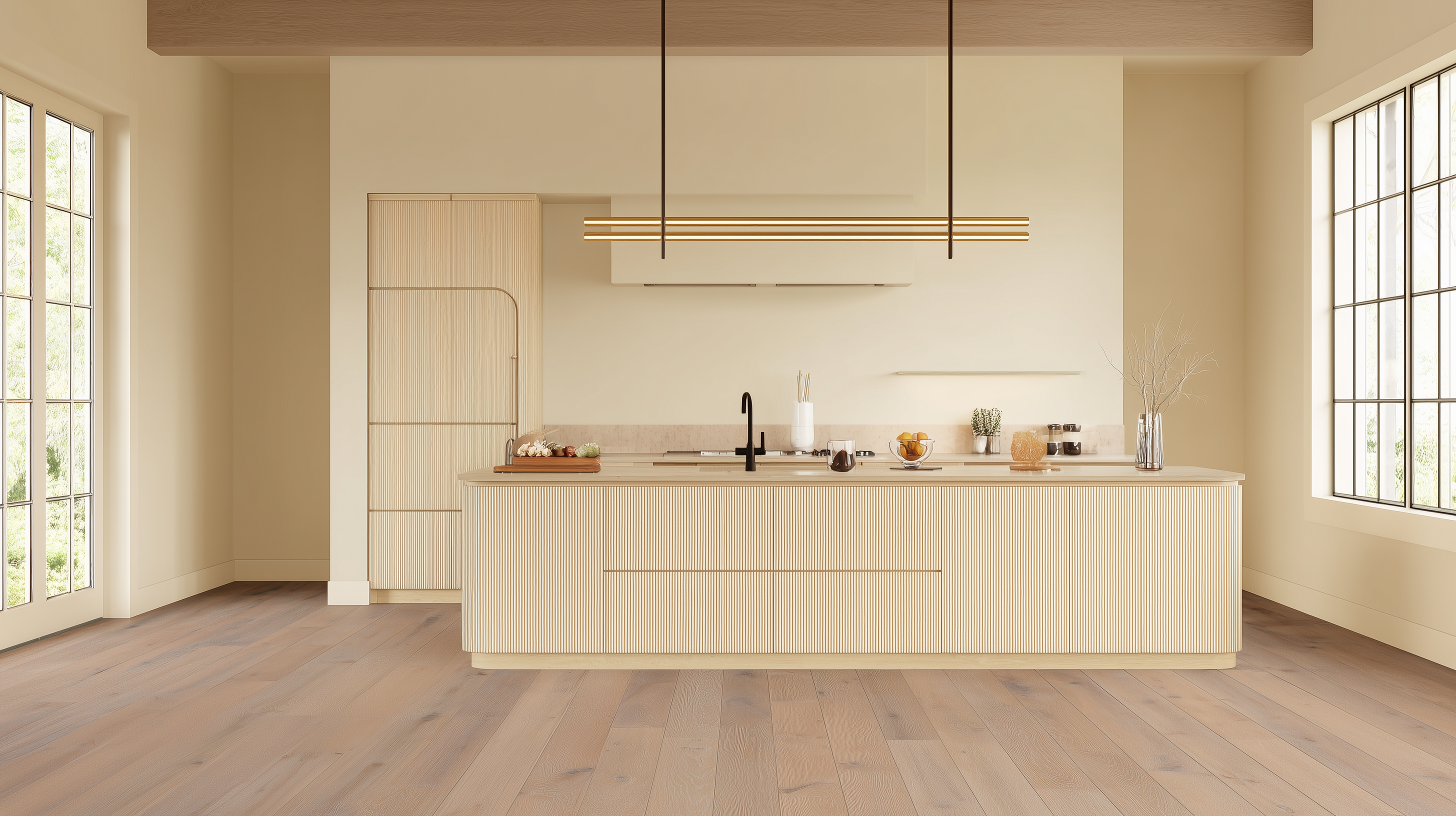Floors carry more than weight. They hold the daily rhythm of a household, the gatherings that define a home, and the quiet details that give rooms their atmosphere. Yet for something so essential, we often overlook the foundation beneath. A floor is more than its visible surface. The subfloor and finished material together create stability, durability, and beauty that can influence the value of a home as much as its roof or walls. Choosing the right wood—whether for the unseen layers below or the visible planks above—can mean the difference between a floor that creaks and one that endures for decades.

The question most DIYers ask is, “Which wood is best for flooring for either the sub-floor or the top finished floor?” Here are the key considerations for selecting the best wood for both.
Let’s talk about the sub-floor first.
Understanding Subfloors: The Invisible Foundation
There are three types of subfloors you find in most homes. They are:
1. Plywood or OSB
Plywood is made from thin wood veneer arranged in layers where the grains alternate 90 degrees. Plywood is a sturdier version of the commonly used OSB (oriented strand board). OSB is engineered wood like plywood, except it uses thin strips of wood instead of veneer sheets. OSB is highly resistant to cupping, warping, or splitting. Plywood or OSB for flooring will have a tongue and groove for easier installation and higher edge strength. OSB is particularly suited for floor load-bearing applications and a less expensive alternative to plywood.

2. Lumber
Before the invention of plywood or OSB, builders used lumber to build the sub-floor. In older homes, you may find wood boards laid diagonally across the stringers to create the sub-floor. Wood planks are more expensive, require more installation time, and prone to warping more than OSB.
3. Concrete
Concrete is the sub-floor in basements. In many areas of the country that don’t have basements, it’s called a slab-on-grade. When installing a floor on top of concrete, it’s necessary to lay down a moisture-proof barrier as the concrete can wick up water from the ground.
 (Underlayment with moisture barrier from Easiklip Floors)
(Underlayment with moisture barrier from Easiklip Floors)
Which wood is best for flooring? For most DIY flooring projects, you’ll use OSB for your subfloor.
Plywood vs. OSB: Strength, Cost, and Performance
There is still an ongoing debate on whether pressure treated wood is safe for indoor use. The chemicals used to preserve the wood repel termites, other pests, and protect the wood from moisture and rot.
The green tinge you see on treated lumber comes from copper-based chemicals. These chemicals can corrode ordinary fasteners like screws and nails unless they are stainless steel. There is the possibility of outgassing, which means fumes can find their way into the room for months or years after installation. Again, this depends on the preservative. There is the green stuff, Chromated Copper Arsenate, an arsenic-based compound. Then you have borate treated lumber, which is a natural mineral.
The Canadian government hasn’t ruled it out, but most professionals advise against using it indoors. In the U.S., the EPA has approved borate treated wood for indoor use. So, it depends on the type of preservative, whether you want the wood indoors or not.
Is Plywood or OSB Better for a Subfloor?
A sub-floor must be substantial and durable. After all, it must hold the weight of everything placed on top of it. Initially, builders used solid wood boards laid diagonally across the floor, joists for their subfloors. Solid wood costs more to purchase and to install. It also tends to expand and contract, which can create problems for the finished floor.
Plywood became the answer. It’s made by gluing sheets of wood veneer under heated pressure so that the grain of each layer alternates at 90 degrees. This creates a strong building material that resists expansion and contraction of wood and covers a larger area than boards alone.
OSB (Oriented Strand Board) is like plywood, except it uses short strips of wood. The strips of wood make it more consistent than plywood, which may contain knots. Both Plywood and OSB meet building codes for structural panels and sub-floors. However, OSB is a less expensive and more popular material.
OSB is not the same as particleboard. Particleboard has much smaller wood pieces and will not carry the weight like OSB.

What Size Should Plywood Be Used for A Subfloor?
In a new subfloor, plywood is a minimum of 5/8-inch thick and comes in 4 ft. x 8 ft. sheets. Purchase 7/8-inch thick if the joists are weak and need better support. For estimation purposes, 3/4 thick plywood weighs about 2.5 pounds per square foot (PSF). One 4’ x 8’ sheet weighs approximately 84 lb. or 38 kilograms.
What Is the Best Material for A Subfloor?
OSB is your best bet for a subfloor material if you plan to install over wood joists. It’s more economical than plywood and will resist moisture and expansion.
However, neither OSB nor plywood are water-resistant. They can swell if exposed to water making the finished floor uneven. Always protect these materials from water, especially during installation.
What Plywood Is Used for Subfloor?
When shopping for plywood for an underlayment, it will be marked, “Underlayment.” You’ll see different grades of plywood, depending on the quality of the veneer on each side. Manufacturers use a letter grade to describe both sides of the plywood from A to D, with A-grade having the least amount of knots and blemishes. For example, grade A to C plywood means the “A” side is sanded and has few defects, while the “C” side has moderate blemishes. It’s okay if both sides are of different quality since the “C” side will face away from the finished floor.
Most underlayment-approved plywood is at least 3/4 inches thick. Also, most "underlayment" style plywood is made with a tongue and groove profile on opposing sides (just like hardwood flooring) so that it's easier to line up each piece for a seamlessly smooth transition.
What Type of Wood Is Used for Subfloor?
As we noted above, OSB is the modern choice of builders and DIYers due to its strength and affordability. For upscale homes, 3/4 inch plywood will be the best choice.
Both plywood and OSB used for sub-floors consist of softwoods like pine, spruce, and fir. The reason is that this wood is easier to process, grows faster, and is a sustainable resource.
If you are remodelling and the subfloor is flat and level, reuse it to save time and cost. If the home uses lumber for a subfloor and can use it, it will provide additional sound and heat insulation.
Which Is Better Engineered Hardwood or Solid Hardwood?
There is no one-size-fits-all answer to this question. The answer depends on the floor’s location and how long you will live in the home.
For installation on a cement slab or below grade, an engineered floor has the advantage of not absorbing moisture and expanding like solid hardwood. On cement, engineered flooring needs no subfloor, so the floor height is only the engineered floor. That’s crucial when it comes to metal exterior doors where cutting the door is not an option.
Hardwood floors will last longer, sometimes 100 years or more. They can be sanded and refinished multiple times. Surveys point out that Most home buyers prefer hardwood to other flooring types, even in the kitchen and bedrooms.
Regarding cost, they vary due to quality and installation. For example, a prefinished floor may cost more per square foot to purchase, but the labor cost to install and finish a solid wood floor is much higher.
For more details, read “How to Select Hardwood Flooring That is Best for Your Home.”
What Is the Best Wood-Like Flooring?
When we talk about “wood-like” flooring, we want a floor that looks like genuine hardwood. There are four alternatives to a solid wood floor, but only one is the best.
- Vinyl Wood Flooring – This is a 100% synthetic material with an imitation wood grain. It’s an inexpensive and viable flooring material for areas with lots of moisture, like a bathroom.

- Wood Tile Flooring – This is a ceramic tile with a wood grain glaze. It contains no wood.

- Laminate Wood Flooring – This product uses a simulated wood grain vinyl sheet attached to a plywood-type base. There is no wood on the top layer.

- Engineered Wood Flooring – Instead of a photographic vinyl top layer, engineered wood uses real wood veneer on top glued to multiple layers of plywood or synthetic materials.

The best “wood-like” flooring will always be genuine, solid wood, not imitation.
What Are Wooden Floors Made Of?
Wood seems to be the obvious answer. However, there are three categories of wood floors, each with many species of wood.
- Soft Wood – This category includes pine, cedar, fir, and other coniferous trees with needles.
- Hardwood – This wood comes from deciduous trees, or trees with leaves.
- Engineered Floors – This floor has a top layer of real wood, typically hardwood, glued to a substrate of layers glued together.
There are many species of both hardwoods and softwoods, each with unique visual and hardness characteristics. So, which wood is best for flooring? You’ll need to consider the overall design goals of the room to get the answer.
What Is the Most Common Wood Flooring?
The NWFA (National Wood Flooring Association) reports that the most common wood flooring is white oak. Oak is a hard, durable wood that is widely available. It looks great with a natural finish but accepts colored stains as well.
The second most popular are engineered wood floors as they come in a range of prices and styles.
This blog, “Flooring Price Comparison,” will help you with your search.
What Is the Most Durable Wood Floor?
Let’s define durable to answer this question. Typically, the harder the wood, the longer it will wear from foot traffic. To measure a wood’s hardness, manufacturers use the Janka Hardness Scale. It measures the pounds-force (lbf) needed to embed a steel ball halfway into the wood.
The hardest wood is Australian Buloke, at 5,060 lbf. Compare that to white oak at 1,360, Maple at 1,450, or Douglas Fir at 660.
The most durable is not the most practical. That’s why most hardwood floors use oak as a trade-off between durability and affordability.
What Type of Wood Is Used for Hardwood Floors?
The most popular hardwood floors are white oak. Used for centuries, it has a uniform open grain that works well with any decor. Oak has the durability to last for generations and can be refinished many times.
Oak is not the only choice. Other hardwoods such as walnut, cherry, hickory, maple, and pecan add rich color and elegant, fine-grained texture that oak can’t match. It comes down to budget and design taste when choosing the right wood for your home.
What Is the Most Popular Wood for Hardwood Flooring?
Again, because of its availability, white oak is the most popular hardwood flooring. Builders choose oak for its durability. They can stain it to meet the customer’s taste. Homeowners select it because oak is affordable.
When asked, “Which wood is best for flooring?” a survey of NFWA (National Wood Flooring Association) members reported that white oak is the top species in demand by a wide margin. Almost 70% of hardwood ordered is white oak.
What Is the Best Brand of Hardwood Flooring?
When we talk about a “Best Brand,” best for who? If you are a large regional flooring installer, the manufacturer that provides you with the best incentives is the “best” supplier for you and the one you will promote.
This article targets the do-it-yourselfer who doesn’t plan to rent tons of specialty tools and supplies to lay and finish a floor on-site.
If you want a genuine 3/4 inch white oak floor and the look of a professional installation without having to use nails, screws, or messy glue, then there is only one brand for you. Easiklip floors are real oak floors, not engineered. The system combines traditional tongue and groove boards with a patented aluminum clip that makes each plank a snap to install. You don’t have to fret about splitting a board with nails or spilling excess glue on the new wood.
Each board comes pre-finished, so you can use the room immediately when completed. You won’t wait for days for the finish to dry or weeks for the fumes to dissipate. Also, Easiklip solid oak floors float on top of the subfloor allowing for natural expansion and contraction. You won’t experience the cracks or warping that can happen with a permanent installation method.
To see why this brand is the best choice for DIYers, checkout Easiklip’s blog “Your Easy Install Wood Flooring (No Experience Needed).” You can also order a sample by visiting – Easiklip Sample Pack.
A Floor That Lasts Begins Below the Surface
Choosing the right wood for your flooring project is as much about structure as it is about style. Subfloors set the stage, ensuring strength and silence beneath every step, while finished planks bring character and warmth to the surface. Oak remains the most popular choice for good reason, offering resilience, beauty, and flexibility across design styles. Whether you choose solid or engineered, plywood or OSB, investing in the right materials now prevents costly repairs later. The best floors are those that balance performance with presence—quietly supporting your home while shaping the spaces where life happens.
Bring Natural Elegance Home
If you’re ready to simplify your next flooring project, explore Easiklip’s solid oak floating floors—designed for DIY ease, long-term durability, and timeless style.
Order your free sample today: https://easiklip.ca/pages/order-samples
Explore pricing here: https://easiklip.ca/pages/pricing
Experience the confidence of a floor built on quality from the ground up.
